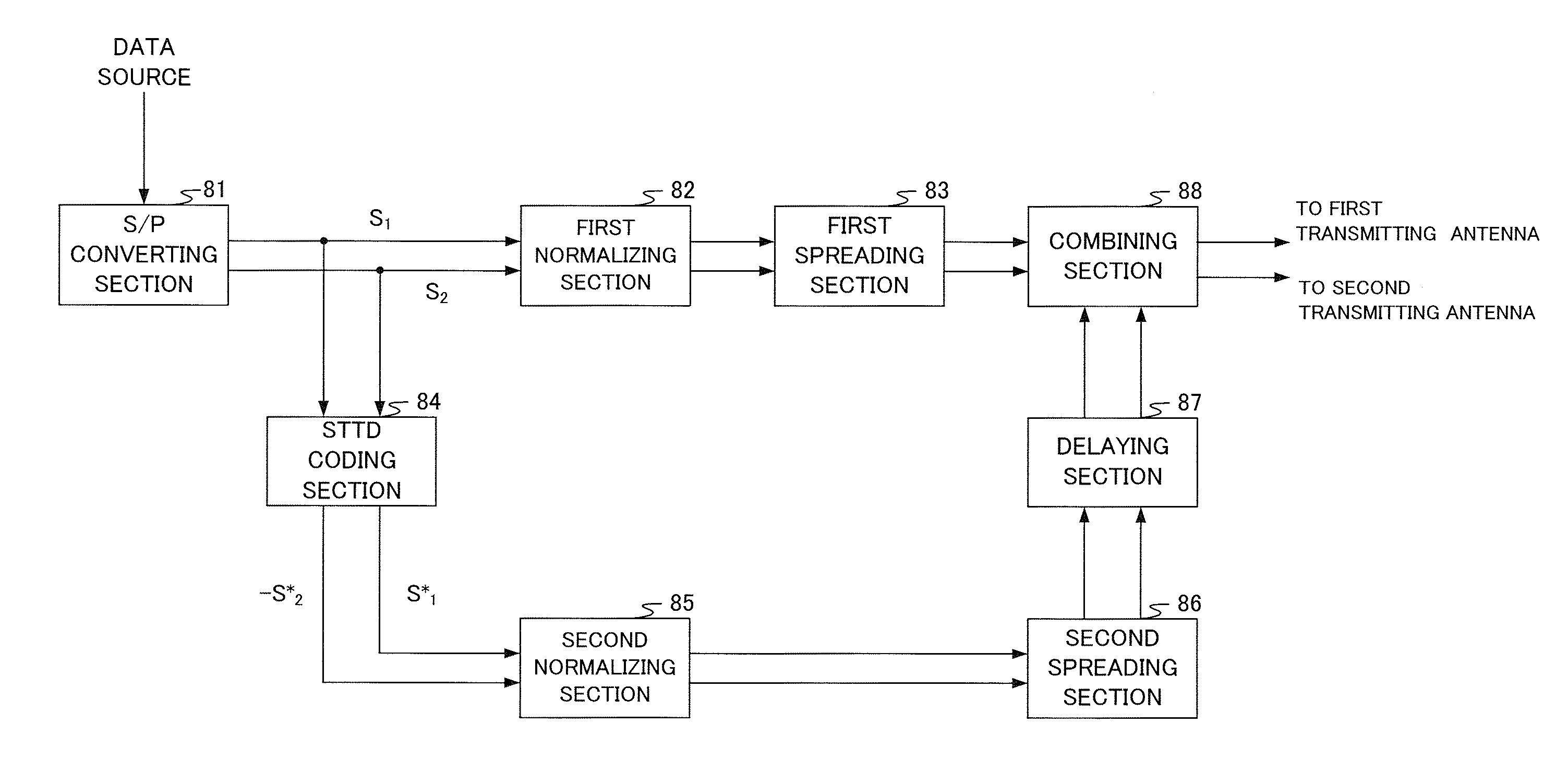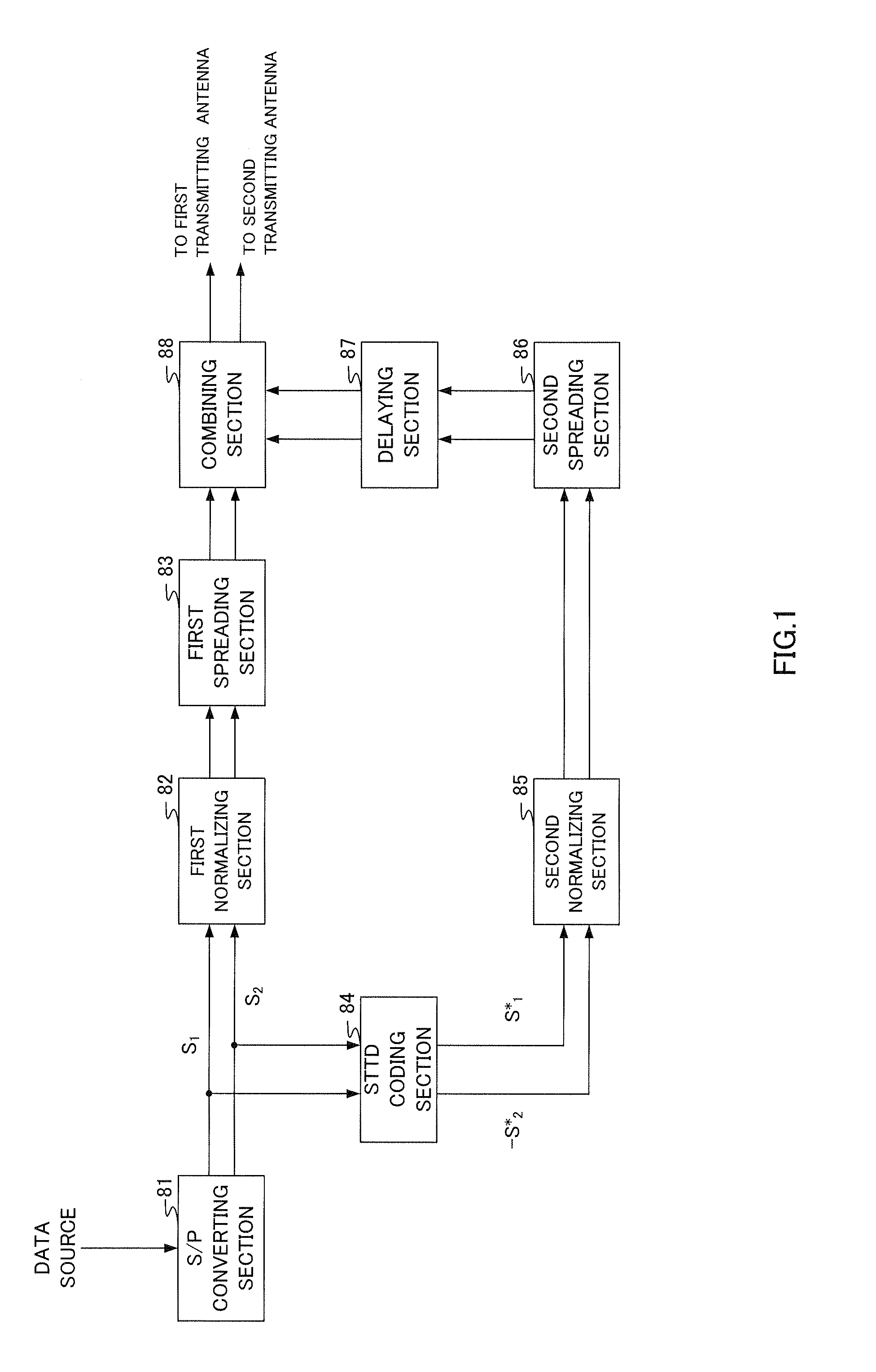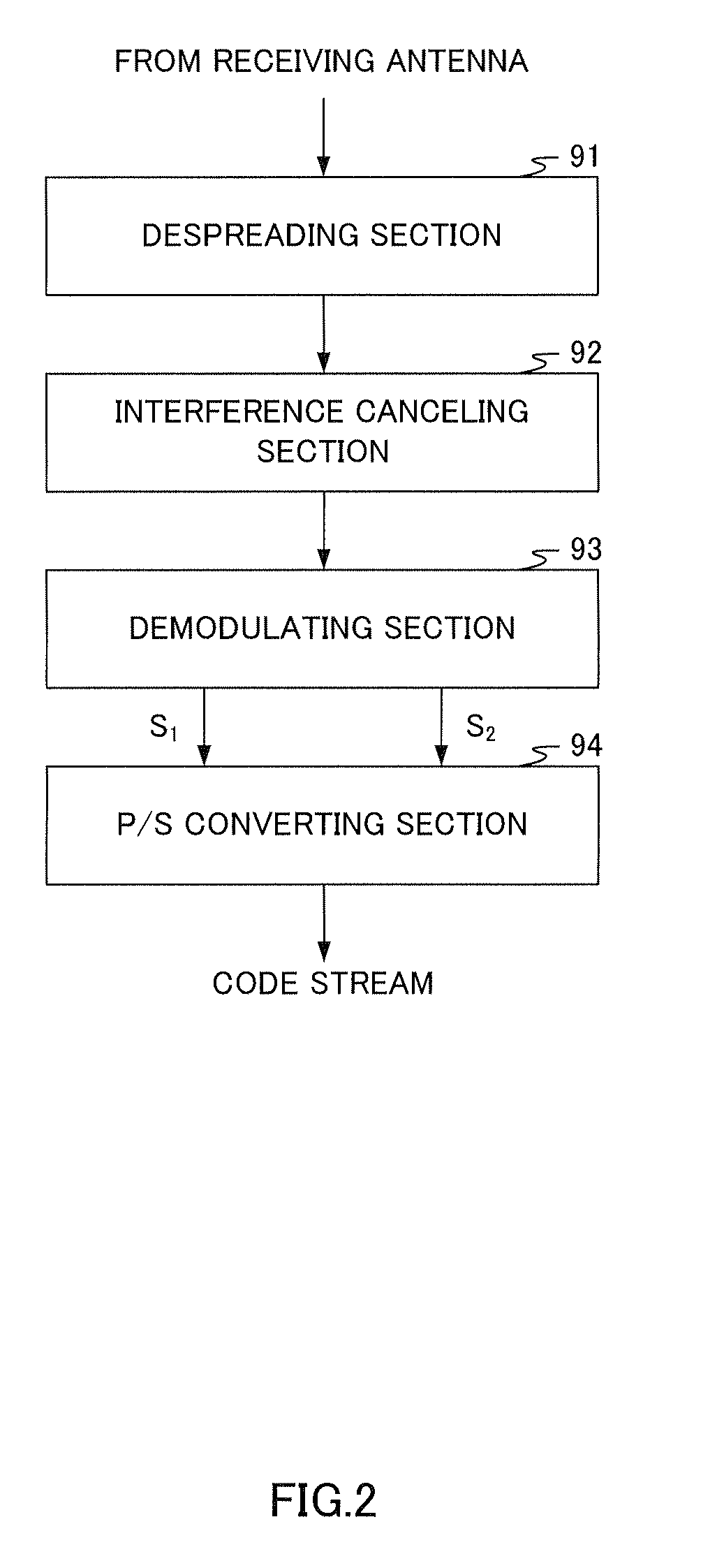Transmission system, transmission method, reception system, and reception method
a technology of applied in the field of transmission system, transmission system and reception method of spacetime transmission sequence in multiantenna cdma wireless communication system, can solve problems such as limiting the number of antennas, and achieve the effect of improving transmission efficiency
- Summary
- Abstract
- Description
- Claims
- Application Information
AI Technical Summary
Benefits of technology
Problems solved by technology
Method used
Image
Examples
Embodiment Construction
[0040]An embodiment of the present invention will now be described in detail with reference to the accompanying drawings. In this embodiment, the operation principle of the present invention will be first described using a system having two transmitting antennas as an example, and then is applied to conditions where the number of transmitting antennas is increased. Although the number of receiving antennas is not limited in the present invention, in order to simplify description, an example of one receiving antenna will be described in this embodiment.
[0041]FIG. 3 shows a configuration of a transmission system according to an embodiment of the present invention where two transmitting antennas are used.
[0042]As shown in FIG. 3, first, S / P converting section 11 performs S / P conversion on an inputted code stream, and then outputs first code stream s1 and second code stream s2, which are parallel signals.
[0043]Here, STTD spreading section 19 performs two types of spreading processing on...
PUM
 Login to View More
Login to View More Abstract
Description
Claims
Application Information
 Login to View More
Login to View More - R&D
- Intellectual Property
- Life Sciences
- Materials
- Tech Scout
- Unparalleled Data Quality
- Higher Quality Content
- 60% Fewer Hallucinations
Browse by: Latest US Patents, China's latest patents, Technical Efficacy Thesaurus, Application Domain, Technology Topic, Popular Technical Reports.
© 2025 PatSnap. All rights reserved.Legal|Privacy policy|Modern Slavery Act Transparency Statement|Sitemap|About US| Contact US: help@patsnap.com



